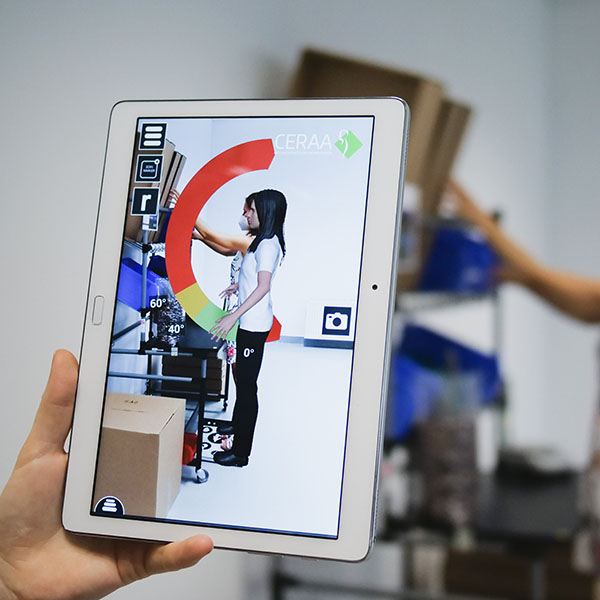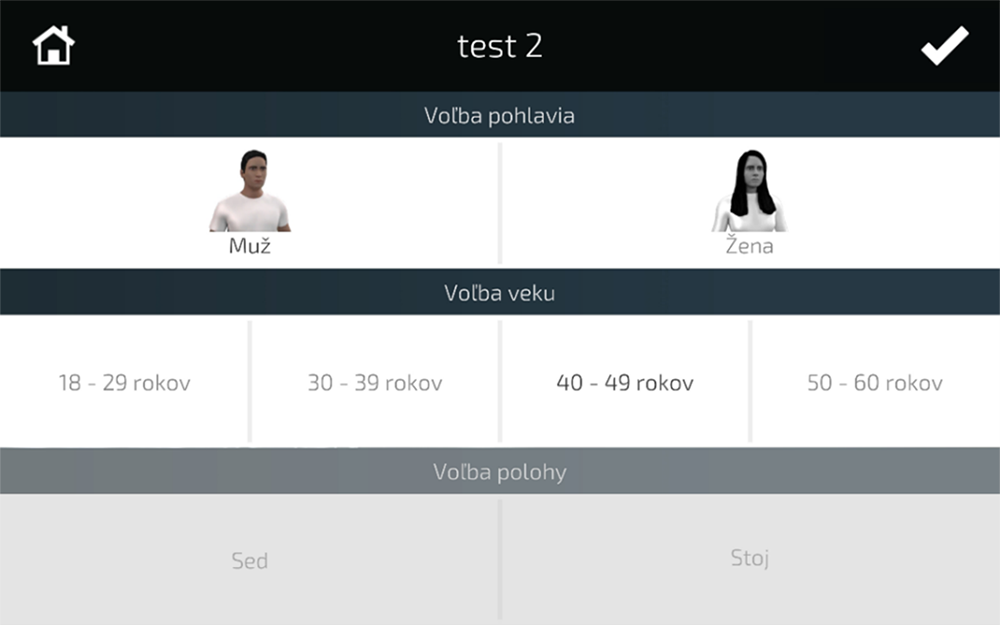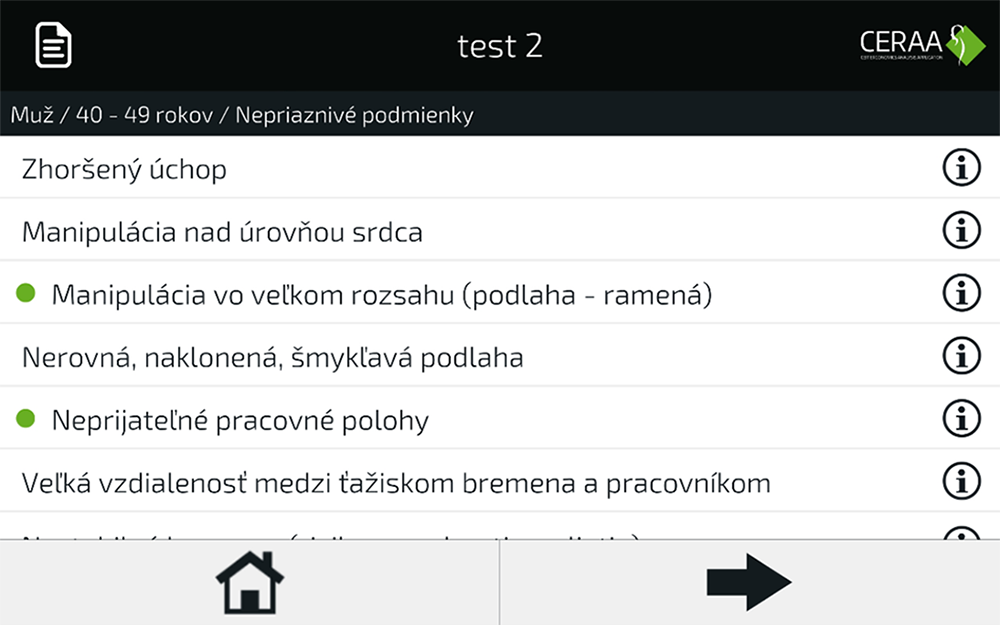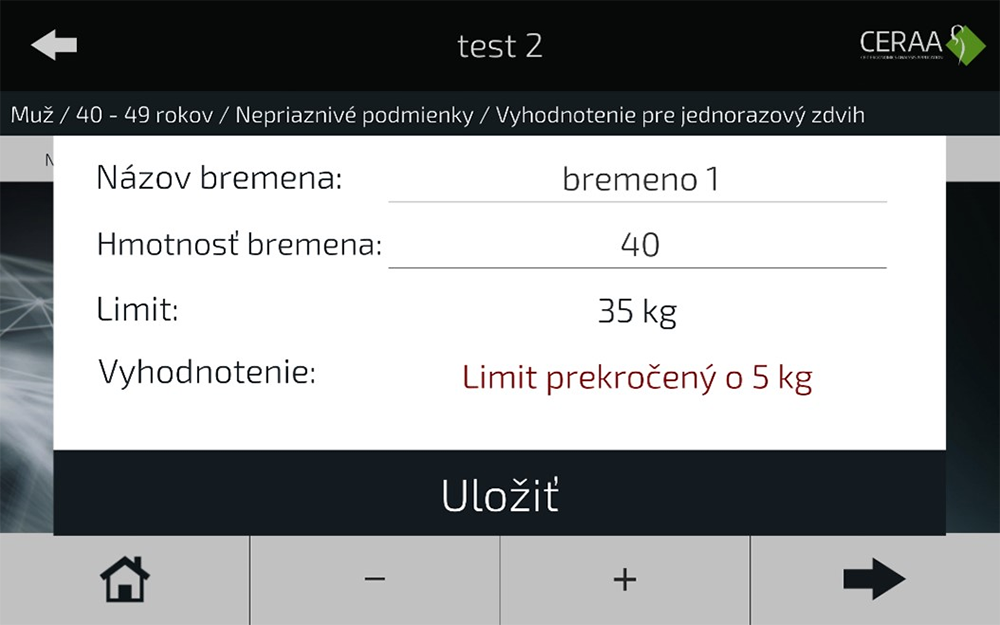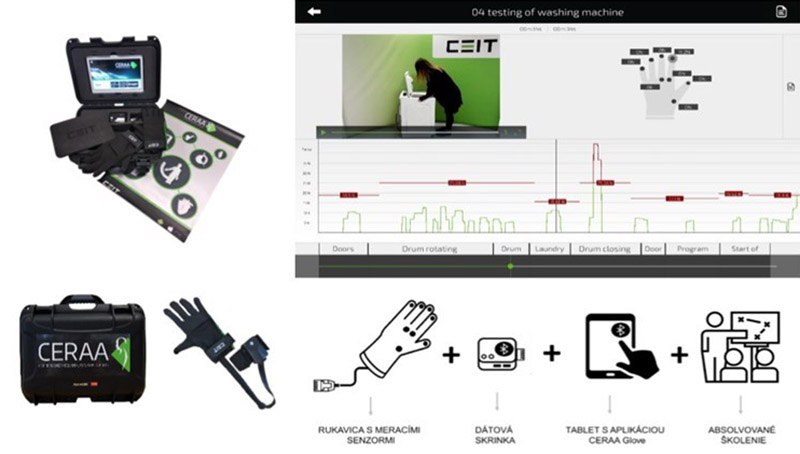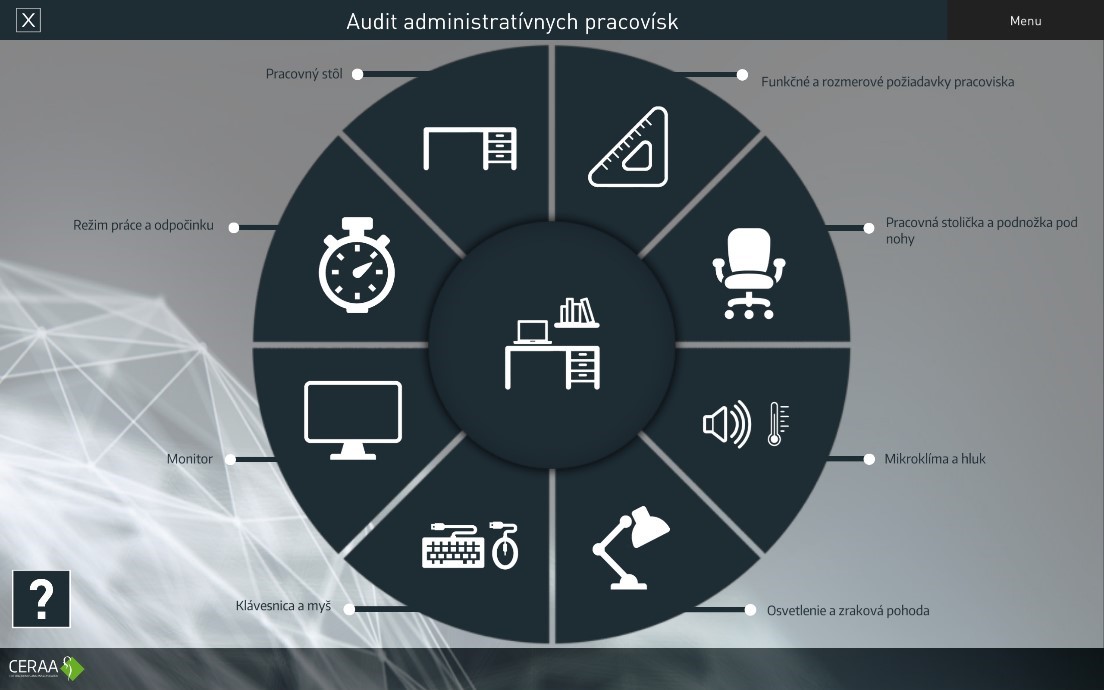The importance of ergonomics in developing modern and healthy industrial workstations
Date: May 27, 2024, author: Eva Pińeiro González
The transformation towards Industry 4.0 and the growing use of artificial intelligence have a profound impact on the way we work. These changes bring new challenges and opportunities for people and our society. In order to implement in an effective manner these complex socio-technical systems, we need to be able to understand the changes in employees’ tasks and responsibilities, as well as how to approach in a holistic manner the way we design our work and work systems.
Since the topic of Industry 4.0 is relatively new, research on human work in this area is still insufficient. Using an approach of human factors and ergonomics can thus be of great benefit from the perspective of analysing, understanding and designing human work, focusing on improving and expanding people’s physical, sensorial and cognitive skills, and not on autonomous factories with no perception of the human factor.
The importance of ergonomics in industrial companies
Exoskeletons, wearable sensors, artificial intelligence, computer vision, virtual and augmented reality, data analysis… all these upcoming technologies change the way safety professionals approach ergonomics. Developments in workplaces and technological advances are making innovative ergonomic solutions essential for companies which aim to support a healthy and effective work environment.
Just as in fashion, certain principles remain constant in ergonomics, in particular in the workplace. The optimal approach to ergonomics continues to prioritise employee comfort, support and user-friendliness. By integrating these solutions into business and understanding their timeless value, we can ensure that employees remain comfortable, safe and continue to be effective.
Let us take a look at the advantages of a precisely-planned ergonomic work environment together with some of the innovative ergonomic solutions and tools proposed by Asseco CEIT.
Introducing an ergonomic strategy into industrial businesses
An ergonomic strategy for protecting employees’ physical and mental health is becoming an essential part of many companies, contributing to an increase in work efficiency and improving work satisfaction.
Work ergonomics is a key factor in ensuring employee comfort, efficiency and safety. An ergonomic work environment helps prevent injury, improves body posture and reduces stress and tiredness. Companies which invest in ergonomics not only improve the quality of life of their employees, but also register increased productivity and work satisfaction.
Asseco CEIT regularly carries out projects to define the ergonomic strategies of its customers. When creating strategies, we base ourselves on a risk analysis of the workplace, ergonomic audits and surveys, legislation and technical standards so that our customer receives a tailor-made ergonomic strategy with a proposal of corrective measures to address potential risks to employee health.
What advantages does ergonomics bring to industry?
The advantages are not only physical and work-based, but also psychological. Let’s look at its most relevant advantages:
Reducing the number of injuries and illnesses
Industrial ergonomics deals with the improvement of work conditions in order for employees to experience less tiredness, discomfort and stress. It can include more comfortable seating, better lighting as well as ensuring that tools or machines are easy to operate.
Industrial ergonomics also takes into account employees’ physical needs, such as their height, strength and endurance. The aim is to minimise injuries and illnesses in the work environment.
Reducing employee absence
One of the main aims of industrial ergonomics is reducing absence as a result of injury or illness by providing well-designed work premises. Industrial ergonomics helps increase employee comfort, which translates into lower absence rates as well as higher morale.
Increasing production
Industrial ergonomics helps companies which try to maximise their productivity and effectivity by proposing such a work environment and activities which increase employee safety, health protection as well as optimising their performance.
The problems which affect employees in terms of ergonomics can be divided into two main groups. The first are physical problems which directly impact employees’ body posture, leading to musculoskeletal disorders. For example, a wrongly set desk height can impact an employee’s incorrect body posture and can have long-term consequences on their health. By providing adjustable workstations with different heights for operators, we can prevent backache and tiredness, which could otherwise lead to a lower performance and a fall in productivity. The same applies to an office work environment, where desk height and chair design impact employee comfort and performance.
When evaluating workplace ergonomics, cognitive factors can be of equal importance. While physical problems cause stress to soft tissue, employees with a high cognitive burden are at risk of mental stress.
A common mistake in industrial businesses is separating professional activity, physical activity and mental activity. But even manual work has its mental element because it requires the management and processing of information.
Mental burden isn’t a health complication or an occupational disease. However, it must be controlled and maintained between certain upper and lower limits which need to be defined based on the concerned individuals and the required levels of performance or reliability. Work as a permanent mental overload is very often synonymous with repetitive, monotonous and uninteresting work. If we process a small amount of information, it reduces the activation of the brain cortex and lowers intellectual performance. Performance is subsequently lowered and productivity falls. On the opposite scale, mental overload is often associated with sensorial overload, for example of visual origin, leading to tiredness, anxiety, nervousness and an increased risk of disease which might be accompanied by depression or an incorrect evaluation of the operators’ qualities.
Our company’s activities in ergonomics include trying to set up work organisation to make it less demanding physically and mentally. We try to reduce the time necessary for performing tasks while also eliminating the stress and tension which can accompany the work.
Reinforcing “ergo teams” through training sessions
Ergonomics training is very important when staff leaders are trying to create a more comfortable and healthier environment. Good ergonomics training sessions help people understand:
- How to introduce and maintain principles of ergonomics,
- How to correctly operate equipment, tools or work aids,
- How to correctly lift loads,
- As well as any warning signs of cumulative traumatic difficulties.
The knowledge value of ergonomics lies in preventing pointless costs resulting from a loss of productivity. Although certain ergonomic measures can be costly, learning about ergonomics is an effective and affordable prevention tool. It’s important to teach the best approaches in the field of ergonomics annually, in order for employees to learn to differentiate risks and use strategies for a healthier working environment. Via ergonomics training, companies can save thousands thanks to simple lectures or workshops organised on a regular basis by Asseco CEIT, a member of the Slovak Ergonomics Society.
New technologies applied in ergonomics – CERAA and CERAA GLOVE applications
If we take into account that the main objective of ergonomics is “to adapt work to a person’s abilities and opportunities”, then including technologies which help us understand and analyse with precision people’s musculoskeletal behaviour while performing work tasks is a great advance.
The CERAA (Ceit Ergonomics Analysis Application) system, a powerful digital tool, allows an objective an exact analysis of the physical requirements of any existing workplace or workplace under design.
With this application, it is possible to evaluate an employee’s work postures while performing their work activity, and the spatial requirements of the workplace such as the height of the working surface and reach zone. Based on this evaluation, the user receives immediate information on the risks in terms of ergonomics principles, the valid legislation in Slovakia and European technical standards.
The evaluation of employees’ physical burden includes their burden during the manual handling of a load as part of a one-off lift and the total handled weight. The manual handling of loads in many cases is responsible for bringing about physical tiredness, injuries which may occur on the spot or minor injuries, apparently unimportant, and even chronic illnesses or occupational illnesses.
The CERAA application allows us to evaluate the impact of such a burden on a person and to evaluate the risk to employees’ supportive musculoskeletal apparatus when handling loads, with the objective of proposing corrective measures to eliminate this risk.
The most frequent origin of injuries to the musculoskeletal apparatus as a result of physical burden is the overexertion of joints, tendons, ligaments…and the bodily structures of the musculoskeletal apparatus. This overexertion can result from an excessive level of effort, duration and frequent repetition of an action.
CERAA GLOVE
The CERAA GLOVE module of the CERAA application is aimed at quantifying the force exerted by hands using sensors integrated into gloves which measure the exerted force during a work activity based on different types of technical grips. Immediate information is available to the user on whether the limit forces of hand burdening were exceeded or not according to European technical standards.
Companies which invest in ergonomics not only improve the quality of life of their employees, but can also record an increase in productivity and work satisfaction. Healthy employees will most probably be more effective.
There are several ways in which companies can implement ergonomics in the workplace, such as evaluating work premises to identify any problems; providing ergonomic equipment such as chairs and keyboards, and providing training in ergonomic techniques for employees.
Ergo administrative audit
Ergonomics does not concern only the company, but also the employees themselves. In their own work environment, they can take simple steps to improve their comfort such as increasing the height of their table and chair and maintaining a good posture. In order to evaluate how ergonomic principles are respected in the administrative environment, the Ergo administrative audit module was developed.
This module offers an evaluation based on all the principles of ergonomics for administrative workplaces. It is divided into eight main areas which enable us to evaluate the risk resulting from working in an administrative environment. Occupational injuries and diseases such as carpal tunnel syndrome or lower back pain can be exhausting and costly both for the employee and the company. By introducing an ergonomic work environment, companies can help prevent these injuries and ensure a healthy future for their employees.
